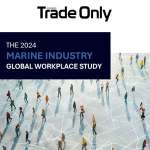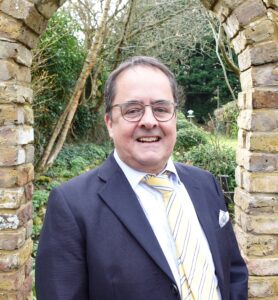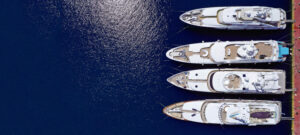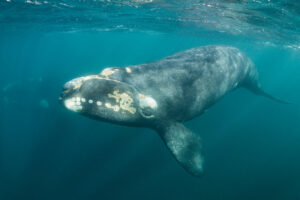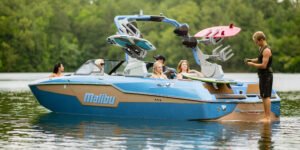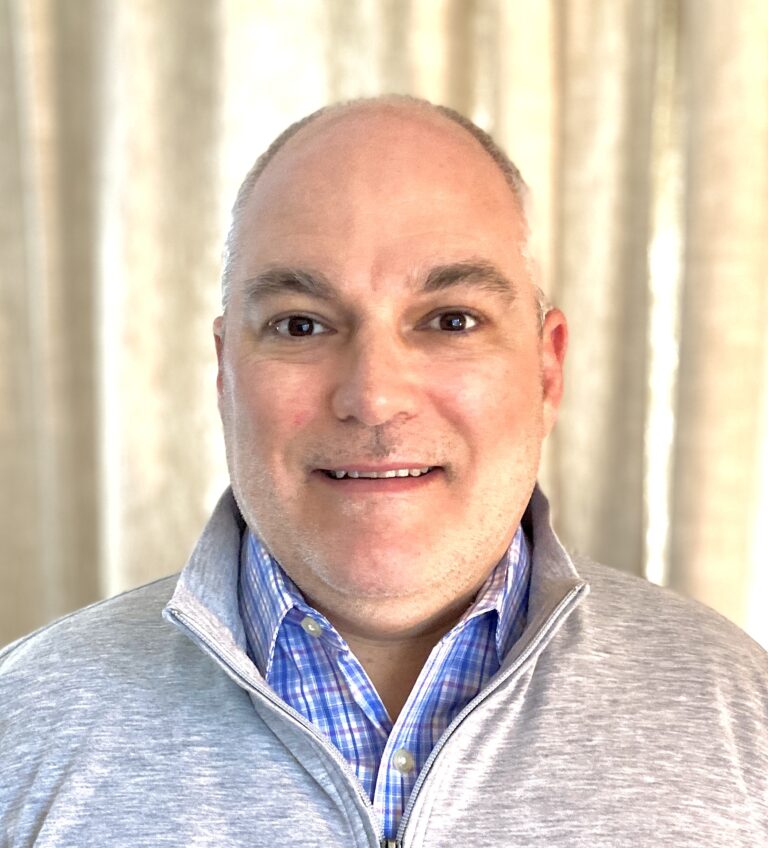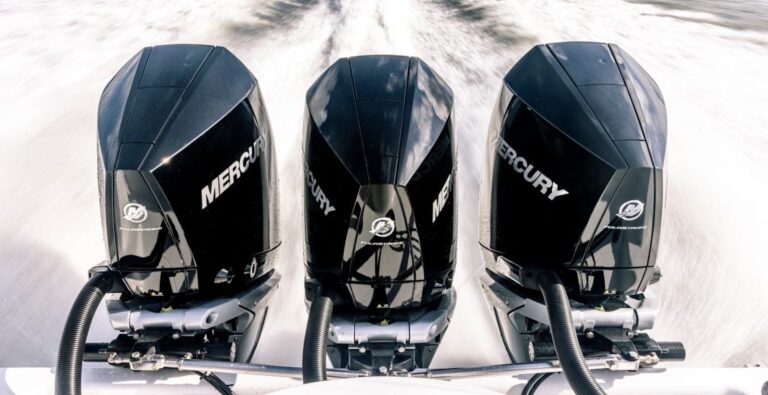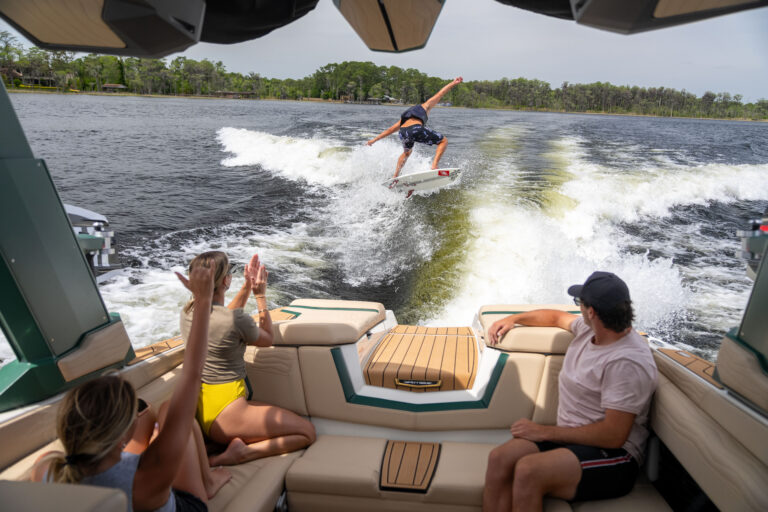Lessons of a lifetime drive diversified builder’s plans for newly acquired Hunter, Mainship, Luhrs

David Marlow, the owner of Marlow Acquisitions, brings to boatbuilding the lessons he learned as a child.
Marlow, who acquired the assets of Hunter Marine Corp. out of bankruptcy Aug. 1, as well as selected assets of Mainship and Luhrs, spent his childhood and early adolescence with his father in the swamps of Florida, searching for the perfect oak from which to craft a boat. He put together his first boat at age 12 and has been building them ever since, incorporating lessons he learned in his youth.
It is this past that Marlow brings to the table in his own businesses — Marlow Marine Sales in Sarasota, Fla., Merrill-Stevens Boat Works in Miami, Norseman Shipyard in China and Marlow Yachts in Palmetto, Fla. — and that he intends to bring to Hunter and Mainship.
“I observed as a child and adolescent — often as a reluctant indentured servant — my father go into the swamps of Apalachicola and west Florida to find a particular oak in the wet swamp from which to cut each natural crook for frame, stem and keel of every boat he built, then design a picture in his mind or at most one written and sketched on discarded butcher paper,” Marlow said in an email interview with Soundings Trade Only. “The cypress and juniper planking the same, his intention [was] to eliminate sawn and bolted frames and unnecessary butt joints.
“I observed his methodology of building the complete product and then went to sea on the boats he constructed,” Marlow recalls. “Though I, like all children, had preferences other than boatbuilding, the lessons of familiarity with the final product in producing a boat that performed, was homogenous and cost-effective somehow stuck and remain today.”
Vertical integration
Marlow says he plans to move Hunter and Mainship forward, beginning with the “assets it has accumulated in talents and history and minus the onerous financial conditions that have stifled creative thinking and passion for one’s handiwork.”
There will be changes though, he makes clear. Marlow’s belief in vertical integration, where practical, might “fail today’s Harvard Business School model,” but the marine industry does not fit the rigid mold of presumed efficiency, he says.
Although Hunter and Mainship were efficient enough to compete in Europe, Marlow plans to weave a bit more American craftsmanship into the composite in an effort to raise the perceived value without a significant cost increase or loss of efficiency. “I believe that our assets worldwide can provide those ingredients at acceptable costing levels, and I believe that the bright minds at Marlow-Hunter and Mainship can determine how to blend them without unacceptable cost penalties,” Marlow says.

“Though we handle millions of dollars in a single transaction in the upper size ranges, our roots are grounded in the early days of childhood, where a 30-foot, custom-built cypress, juniper and oak vessel was built by a single artisan, perhaps with an occasional assistant,” says Marlow.
“The concepts of understanding each and every part of the final equation and perhaps developing a more keen eye and a better blending of talents and processes cannot be found in a single-task factory operation where a man or woman diligently performs a similar task each and every day,” he says. “The team member who has a grasp of the larger picture is, in our opinion, far more cognizant of his or her contribution and how it may affect the final result. It is the composite that is presented to the potential buyer, and the more each team member understands what is within the bouillabaisse, the finer the soup.”
Marlow built his first boat at age 12 from roofing tin that had blown off chicken coops during a tropical storm. He carefully bent and hammered sheets of tin around pieces of swamp wood. For caulking, he used bamboo fiber mixed with southern yellow pine sap gathered by scarring the tree and nailing a tin cup to it. “Though simple, I knew each of the strengths and weaknesses of my materials and how they interacted,” he says. “It is a similar, though far more complex, manufacturing style at Marlow Yachts, one that encourages thought and pride for the part the individual played in the final product. It is a process intended to evoke pride of authorship in every person involved. I believe that production efficiencies can be further improved if each team member is aware of the end goal and the pathway to it.”
The Asia factory
Responding to concerns that the Hunter and Mainship brands will be built in China, Marlow says operating on a global scale is the only option, but that he plans to keep production at both his Asia and Miami facilities, as well as the Alachua plant that has always housed Hunter.
The vertically integrated Asia factory has begun to supply specialized materials to other manufacturers, Marlow says. The 300-plus members of the work force there are cross-trained, and more than 75 percent of them have remained since the factory was built in 2002. “In fact, many of them helped with the construction, the majority of it done by our own hands to our own design using a large amount of local materials, such as granite, native hardwoods, etc.,” Marlow says. “The construction features yacht-quality office furniture, cabinetry, granite floors, granite enclosure walls, and engineering of hand-built steel and concrete beams to act in concert as structural support and a tool for the factory operations.”
The factory was planned as the only environmentally green yacht factory in the world, Marlow says. Beginning on a pristine beach with only a few fishing shacks and no roads, workers broke ground laying bricks and mortar by traveling a pathway forged through many centuries as water buffaloes and people trekked to the nearest settlement. Carved granite — 4,000 lineal feet of 10-foot-high granite — was brought in by a variety of equipment. Placed three feet into the earth to retain moisture on the site, the granite also provides a shield from the ocean breeze.

Two feet of crushed gravel was placed beneath the entire 25-acre site to filter rain and irrigation water routed by Roman drains and aqueducts to 300,000-gallon cisterns for fire protection, a domestic water supply and irrigation for the organic farm that supplies about 75 percent of daily fruits and vegetables. “Once used for irrigation, the water slowly filters its way back through elaborate drains lined with crushed granite, returning to the cistern in sparkling condition to be used again,” Marlow says.
The building process allowed Marlow to observe workers with natural skills in a particular area, and many moved into the factory, where a wooden boat of more than 80 feet was built to teach workers to use modern glues and coatings. Construction of tooling to build the Marlow Explorer yachts followed.
Timber for the yachts comes from trips to Cambodia, Laos, Thailand, Vietnam and Myanmar, where teak logs are purchased and transported to the factory. The waste byproduct from the wood is used to fire large cooking devices, such as the 40-gallon woks and a wood-fired oven on-site.
The waste heat from the chimney is directed across heat exchangers to produce hot water. Even the ashes are gathered and used as organic fertilizer for the fruit orchards, “closing the circle,” says Marlow. “These standards of conduct and operations became the company manual that exists today,” he says.
Workers are apprenticed in the tradition of early America and Europe, and work with masters. “One cannot use a tool until one knows about the tool and how to use it,” Marlow says. “We began with 20 outside masters who produced a skilled work force that now seeds tomorrow’s field for tomorrow’s artisans.”
The dust produced in the construction process is collected in bins on wheels, then mixed with resin to make putties for building temporary tooling for one-off uses. “This produces generous benefits in health, community and well-being to a naturally frugal work force,” says Marlow.
The process encourages a self-governing work force with high standards and “becomes a magnet for others who find this unorthodox methodology attractive,” he says. “We intend to continue the march to build, sell and service the finest yachts on Earth with like-minded people at our factories and shipyards in Asia, in Alachua, Miami and where opportunity affords us to continue with a balanced deck.”
This article originally appeared in the September 2012 issue.

